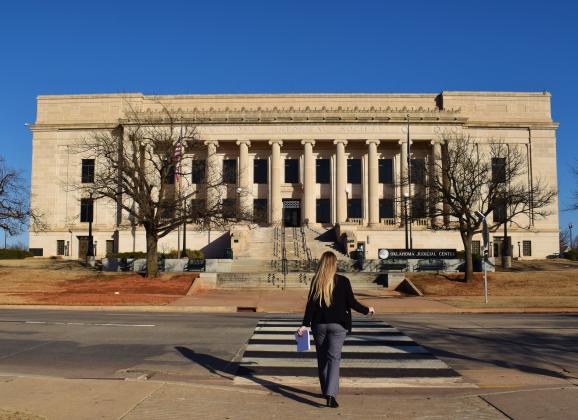OKLAHOMA CITY — The Oklahoma Supreme Court last Wednesday struck two laws that banned abortions, but the procedure still remains outlawed in the state.
Voting 6-3, the state’s high court overturned Senate Bill 1503 and House Bill 4327. The bills were passed by the Republican-controlled Legislature in 2022 and signed by Governor Kevin Stitt.
The laws were challenged by Oklahoma Call for Reproductive Justice, the Tulsa Woman’s Reproductive Clinic, Planned Parenthood Great Plains and Planned Parenthood of Arkansas and Eastern Oklahoma.
Justices Yvonne Kauger, James Winchester, James Edmondson, Douglass Combs, Noma Gurich and Richard Darby voted to overturn the laws. Chief Justice John Kane, Vice-Chief Dustin Rowe and Justice Dana Kuehn dissented.
The limit on abortion bans is the second time this year the high court has pushed back against a complete ban on abortion in Oklahoma. In March the court held that a pregnant woman has an inherent right to end her pregnancy when it is necessary to preserve her life.
Echoing that ruling Wednesday, the state’s high court said both anti-abortion bills were unconstitutional.
In its 12-page ruling, the court said SB 1503 – which prohibited an abortion after the detection of a fetal heartbeat – granted an exemption in the case of a medical emergency, but did not define a medical emergency nor include a severability clause.
The second bill – HB 4327 – outlawed all abortions unless the abortion was necessary to save the life of a pregnant woman in a medical emergency or the pregnancy was the result of rape, sexual assault, or incest that was reported to law enforcement.
At least part of the court’s ruling involved the doctrine of stare decisis – Latin for ‘let the ruling stand’ – a foundational concept in the American legal system.
“To put it simply, stare decisis holds that courts and judges should honor “precedent”— or the decisions, rulings, and opinions from prior cases,” a posting by the American Bar Association said.
The earlier ruling, the court noted, came in the March case Oklahoma Call for Reproductive Justice v. Drummond. In that case the court found that, under the Oklahoma Constitution, a woman had a right to an abortion if the procedure was medically necessary to preserve her life.
Wednesday, the court said it found the two challenged statutes to also be unconstitutional for similar reasons. SB 1503 provides even more extreme language than Section 1-721.4. In addition, the court found that it could not sever the nonoffending portions of either bill, while ruling against the rest.
“Consideration must be given to whether the surviving provisions must rely on the severed portion for meaning or enforcement,” the court said. “In this case if the court were to sever the language allowing for medical abortion only in case of a medical emergency in House Bill 4327, the court would create an even more restrictive statute like SB 1502, which was in further violation of the Oklahoma Constitution.”
Should the court sever the prohibition on abortion altogether, the court said, “there would be no meaning to the rest of the bill because there would be nothing to civilly enforce. In order to attempt to salvage the rest of H.B. 4327, this Court would have to re-write the entire statute, which is not our purview.”
Darby, in a separate concurring opinion wrote that he would dissent if the court “was starting on square one of the subject.”
“But this issue is determined by stare decisis. I maintain my position that I expressed in my dissent in Oklahoma Call for Reproductive Justice v. Drummond,” he wrote.
Kane, the court’s chief justice, pushed back against the doctrine of stare decisis, writing that he would still dissent if “I were to conclude that this case is exclusively resolved by the doctrine of stare decisis.”
This case, Kane wrote, “and OCRJ 1 both deal with abortion, they present different legal and factual issues. I do not believe that application of OCRJ 1 fully resolves the current dispute.”
Justice Rowe wrote that he interpreted this section of law “to require a woman to be in actual and present danger in order for her to obtain a medically necessary abortion. We know of no other law that requires one to wait until there is an actual medical emergency in order to receive treatment when the harmful condition is known or probable to occur in the future. Requiring one to wait until there is a medical emergency would further endanger the life of the pregnant woman and does not serve a compelling state interest.”
Rowe wrote that he could not “ascribe to the majority’s finding that SB 1503 imposes on a woman’s constitutional right to terminate her pregnancy in order to preserve her life. Moreover, in finding that SB 1503 violates that right, I am concerned that the majority has expanded that right beyond what the Court recognized in OCRJ I.”
The issues in the case, he wrote, “are political questions, which are better resolved by the people via our democratic process.”


